Domestic and King Sewing Machine Models (1863-1924)
This page shows examples of Domestic and King sewing machines made prior to the companies being purchased by White in 1924.
Domestic - King Model Comparison
Refer to
this page
to see an explanation of why King machines are included here and to view comparison photos of most models from
multiple angles and a chart summarizing design features.
Domestic Wheel Feed
The Domestic Wheel Feed (VS) sewing machine was manufactured in the 1860s. It looked very similar to the Domestic High Arm shown
below except that it had a wheel feed instead of feed dogs. I have never seen one and none have been reported to me. There is a photo of one
in Carter Bays' The Encyclopedia of Early American & Antique Sewing Machines: Identification and Values. It was the subject of the
1866 lawsuit described on the Domestic Company History page.
Domestic High Arm
The Domestic High Arm Vibrating Shuttle (VS) sewing machine was manufactured in the early 1870s and was much more modern than
its competitors and was the first true "high arm" machine. Some characteristic features are:
- high arm
- rectangular base
- vibrating shuttle
- leaf tension
- no clutch release knob
- bobbin winder on end of machine under hand wheel
- stitch length control knob behind pillar
- no access plate on the front or rear of the machine
- socket style feet
- SN located on front slide plate
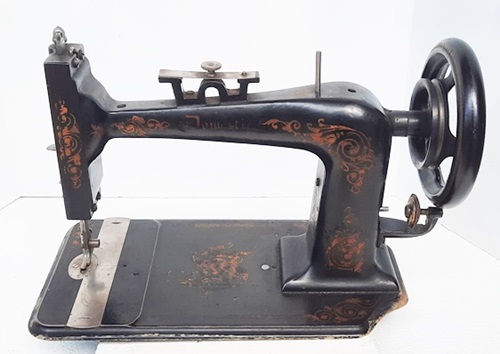 (Early - convex left end of arm, early leaf tension)
(Early - convex left end of arm, early leaf tension)
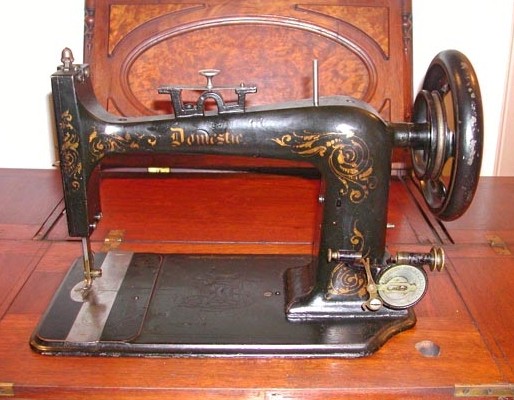 (Middle - concave left end of arm, early leaf tension)
(Middle - concave left end of arm, early leaf tension)
Photo courtesy of Donna Kohler
(modified with an automatic bobbin winder)
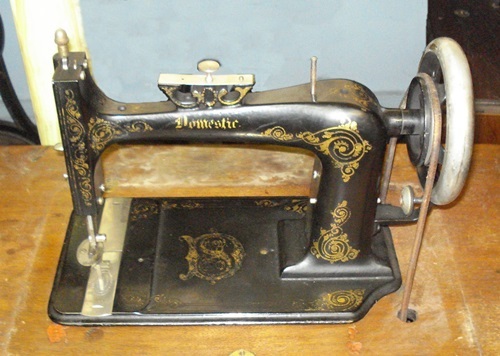 (Late - concave left end of arm, late leaf tenson)
(Late - concave left end of arm, late leaf tenson)
Photo courtesy of Scott S
Domestic fiddlebase
Domestic produced the fiddlebase VS machine from 1875-1901. Some characteristics are:
- fiddlebase
- vibrating shuttle
- leaf tension
- bobbin winder on front of machines (early models have simple winder, later models have automatic winder)
- stitch length control knob behind pillar
- no access plate on the front or rear of the machine
- socket style feet
- SNs located on front slide plate, under front slide plate, and top of needlebar (only on slide plate of earliest models)
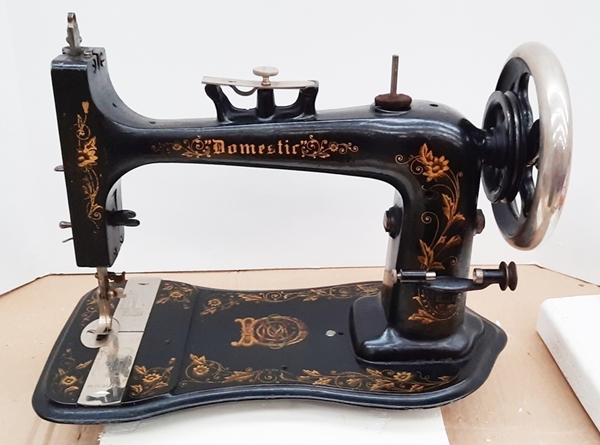
Coming soon! Click here to see other decals and badge names
Domestic A and B Hand Cranks
Domestic manuals from the late 1870s mention a "Hand Machine, for invalids and travellers.
On the "Domestic" system, with modifications". Presumably these were early versions of the Domestic A and B
models. I have not found any ads for them.
The Domestic A and Domestic B hand cranks were manufactured from the late 1870's to the 1910s. They were smaller than
the treadle heads.
Design features include:
- rectangular base
- leaf tension OR disk tension on top of arm
- no access plate on front or rear of machine
- Domestic A stitch lenth control thumbscrew on front at base of pillar
- Domestic B stitch length control knob behind pillar
- socket style feet
- SN located on slide plates
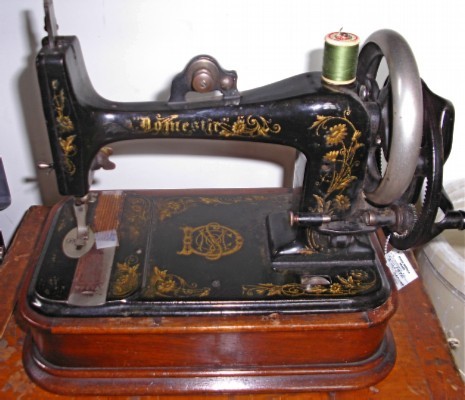 "Little Domestic", precursor to Domestic A, photo courtesy of Judy in BC
(Note top disk tension).
"Little Domestic", precursor to Domestic A, photo courtesy of Judy in BC
(Note top disk tension).
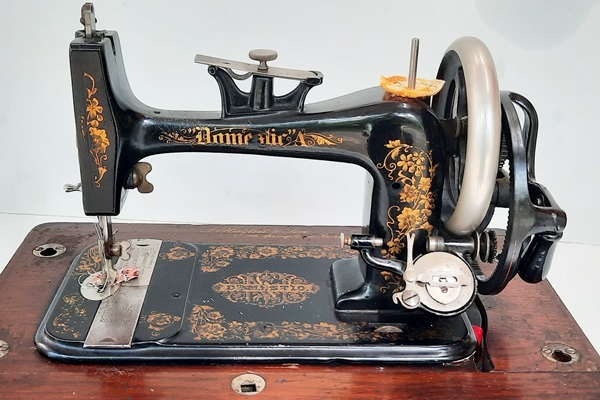 Domestic A (Note top leaf tension)
Domestic A (Note top leaf tension)
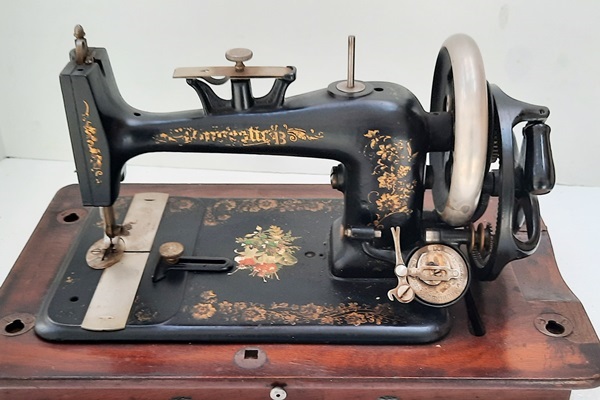 Domestic B (Early Domestic B's might
say "Reliable" on the arm instead of Domestic)
Domestic B (Early Domestic B's might
say "Reliable" on the arm instead of Domestic)
Domestic A and B comparison:
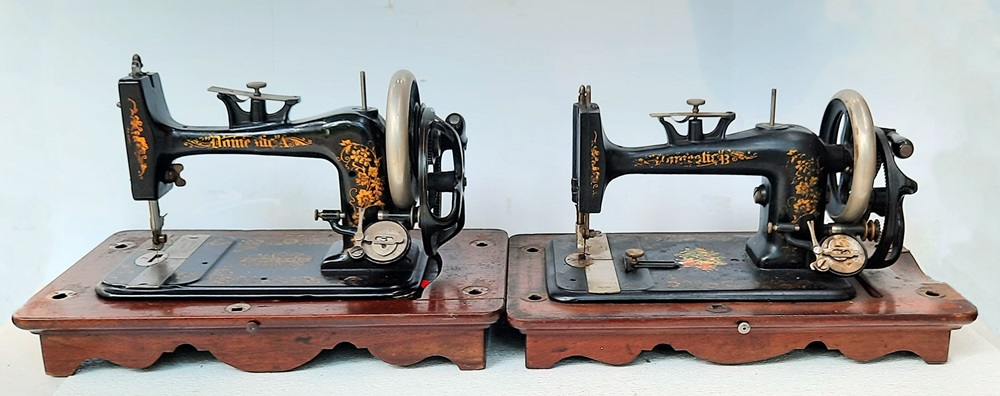
New Domestic
The next model was called the New Domestic, which was introduced in 1901 and likely ended with rollout of the Domestic D in 1909. Design features included:
- fiddlebase
- vibrating shuttle
- disk tension located on the face plate (end) of the machine
- stitch length control lever on the front of the machine at the base of the pillar
- access plate on the right end of the arm on the front of the machine
- socket style feet
- SN located under front slide plate
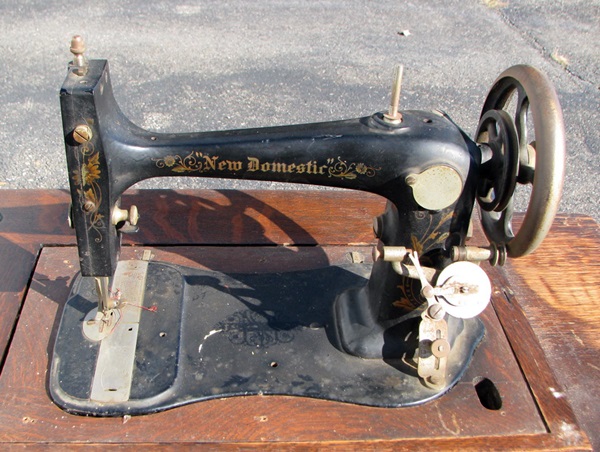
Domestic C
The Domestic C was a lower priced model in the 1900s, approx 1901 to 1909.
rectangular base
leaf tension
no access plate on front of machine
vertical stitch length control lever on front of pillar (earlier machines) OR on bed in front of pillar (later machines)
top clamping feet (early), socket style feet (late)
SN located under front slide plate

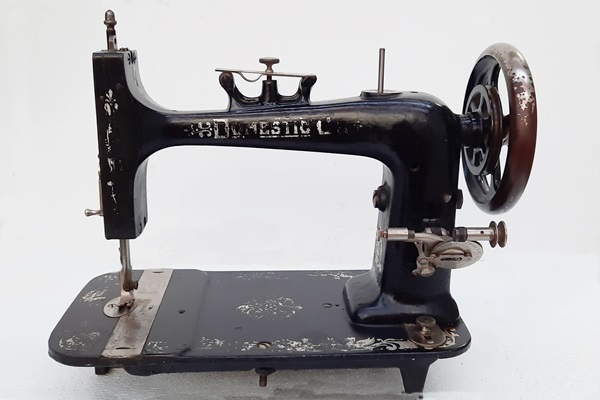
Domestic D
The Domestic D was introduced in 1909 and made until 1915.
- fiddlebase
- barrel tension
- no access plate on front of machine
- stitch length control lever on bed in front of pillar
- top clamping feet
- SN located under front slide plate
- last patent date 10-24-1910
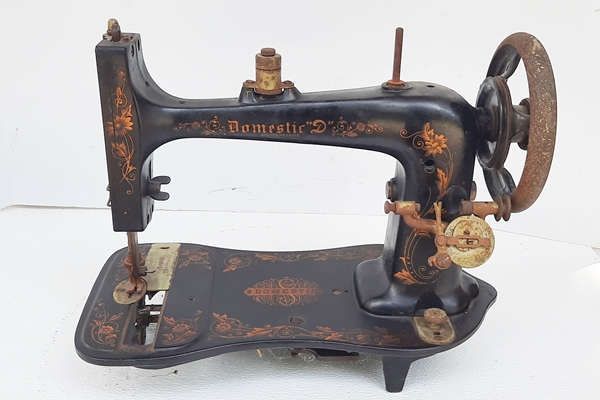
Domestic Rotary, Type 1
Likely made by Standard Sewing Machine Company
This rotary is very similar to a Standard Rotary (except for fiddlebase shape), and in fact appears
to take the same bobbin and chainstitch spider. Design features included:
- fiddlebase
- rotary hook
- disk tension located on the front of the machine
- stitch length control lever on the front of the machine at the base of the pillar
- top clamping feet
- SN located on stitch length control frame
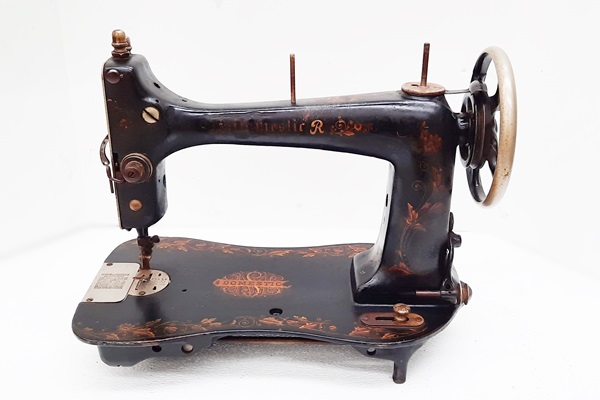
Domestic Rotary, Type 2
Likely made by Standard Sewing Machine Company
This Domestic rotary has a last patent date of 1904, and all of the
patents on the slide plate
patents on the slide plate are identical to the dates
on the King Rotary, Economy Rotary and Standard Rotary. Some identifying features of this model are:
- rectangular base
- rotary hook
- disk tension located on the front of the machine
- stitch length control lever located on bed in front of pillar, two versions
- access plate at top of pillar on the back of the machine
- bobbin access plate flips up to left
- top clamping feet
- SN located on frame of stitch length control
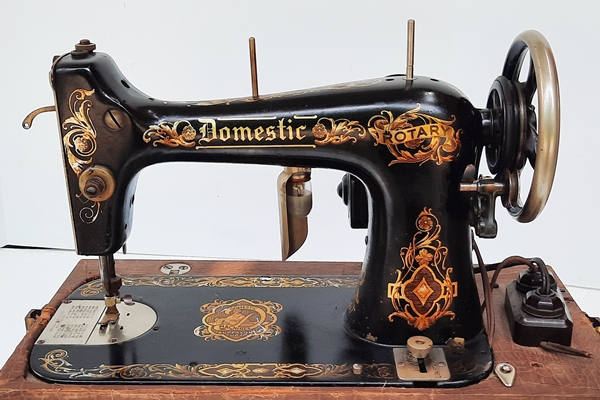 early
early
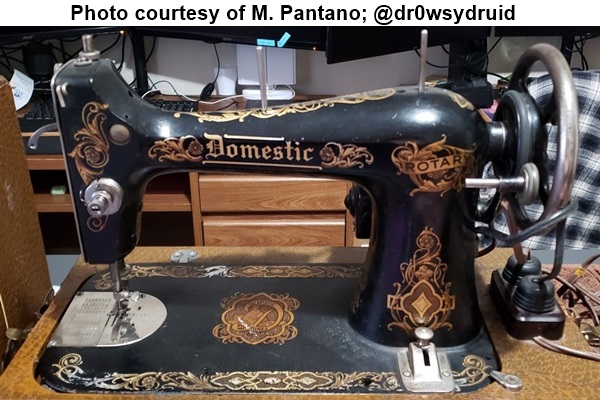 late, note change in stitch length control
late, note change in stitch length control
Photo courtesy of M. Pantano; @dr0wsydruid
Domestic Machines made in King Factory
Click here for more info.
Domestic Vibrator
Domestic Vibrator machines were produced from 1915 into the 1930s. They were copies of the Singer Model 27/127 and were made
by White after 1924.
Some identifying features are:
- rectangular base
- vibrating shuttle
- disk tension located on the front of the machine
- stitch length contol knob on front of pillar
- access plate on the left end of the arm on the front of the machine and at top of pillar on the back of the machine
- side clamping feet
- SN located under front slide plate (early) or on bed tag in front of pillar (late)
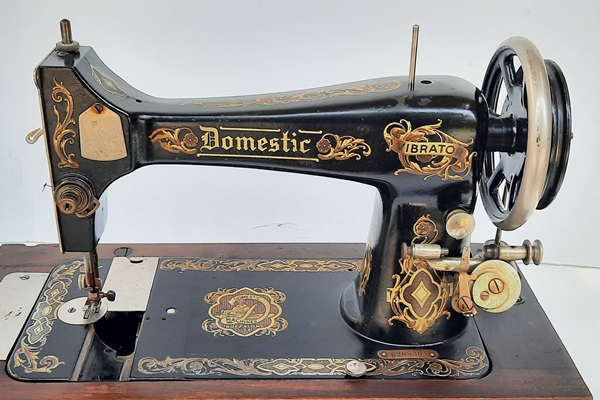
Domestic Rotary, Type 3, Domestic 69 Hi-Speed Rotary
This Domestic rotary has a last patent date of 1919, and was made from 1919 to 1924.
Some identiying features are:
- rectangular base
- rotary hook
- disk tension located on the front of the machine
- stitch length control knob on front of pillar
- side clamping feet
- brown or black machine with gold decals
- Catution! The stitch length lever and bobbin winder are very easy to break off on this model.

Why isn't my
Domestic machine shown on this page?
Click here to find out.
Machines made by King SMCo for Sears, Roebuck & Co
Click here for more info.
Franklin VS
The Franklin was a badged machine sold by Sears beginnging in 1911 and was made into the 1930s (by White after 1924).
It was a copy of the Singer 27/127 and appears to be
identical
to the King VS.
Design features include:
- rectangular base
- vibrating shuttle
- disk tension located on the front of the machine
- stitch length contol knob on front of pillar
- access plate on the left end of the arm on the front of the machine and at top of pillar on the back of the machine
- side clamping feet
- SN located under front slide plate
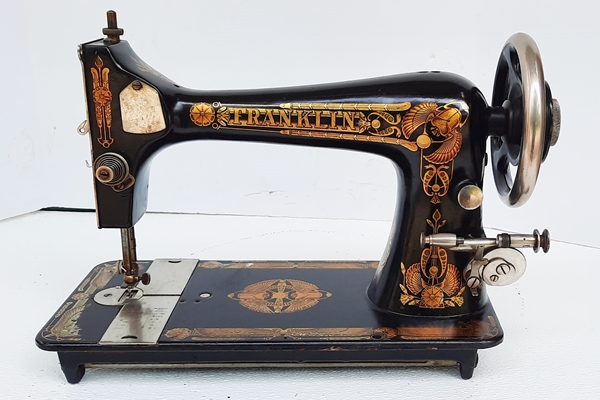
Minnesota X
The Minnesota X was a badged machine sold by Sears in 1912-1913.
Design features include:
- rectangular base
- vibrating shuttle
- disk tension located on the front of the machine
- stitch length contol knob on front of pillar
- side clamping feet
- SN located under front slide plate
- Unlike the Franklin and other Minnesota models, it does not have a matching
King model.
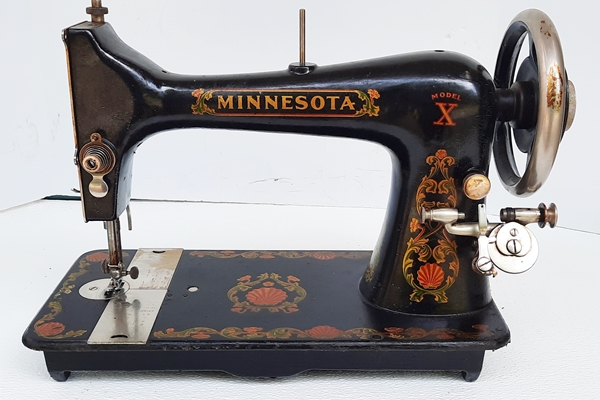
Minnesota A
The Minnesota A was a badged machine sold by Sears beginnging in 1913 and was made into the 1930s (by White after 1924). It appears to be
identical
to the New Willard.
Design features include:
- rectangular base
- vibrating shuttle
- disk tension located on the front of the machine
- stitch length contol knob on front of pillar (early models) or vertical stitch length lever located on front of pillar (1920 and later models)
- access plate on the left end of the arm on the front of the machine (early machines only) and at top of pillar on the back of the machine
- side clamping feet
- SN located under front slide plate (early machines) or on frame of stitch length control (later machines)
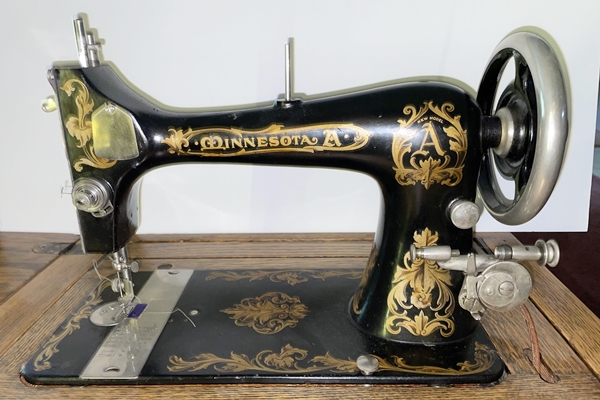 photo courtesy of Jo Mercer (pre-1920)
photo courtesy of Jo Mercer (pre-1920)
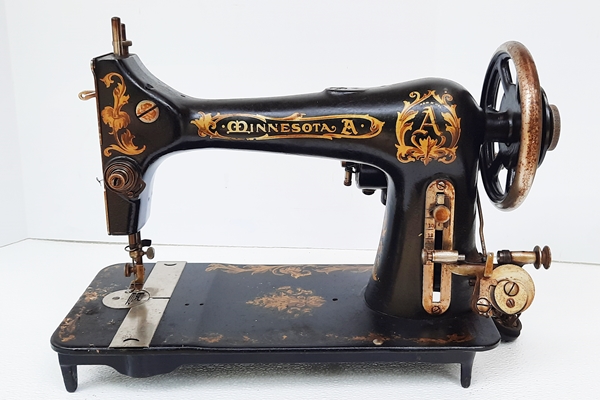 (1920+)
(1920+)
Differences between Davis Minnesota A and King Minnesota A
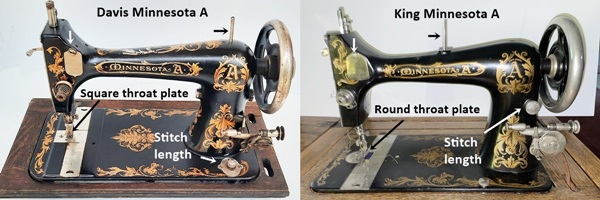 Click to view full size
Click to view full size
Minnesota H
The Minnesota H was a badged machine sold by Sears beginnging in 1921 and was made into the 1930s (by White after 1924).
It appears to be
identical
to the Lessing.
Design features include:
- rectangular base
- vibrating shuttle
- leaf tension
- vertical stitch length lever located on front of pillar
- access plate at top of pillar on the back of the machine
- side clamping feet
- SN located on frame of stitch length control
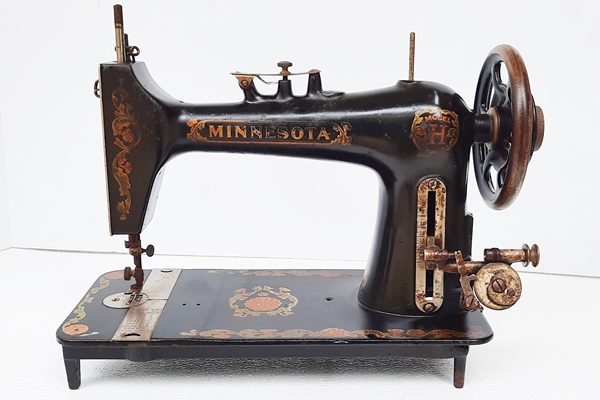
King SMCo Models
King VS
The King VS model was produced from 1908 into the late 1910s. They were
copies
of the Singer Model 27/127. Design features include
- rectangular base
- vibrating shuttle
- disk tension located on the front of the machine
- stitch length contol knob on front of pillar
- access plate on the left end of the arm on the front of the machine and at top of pillar on the back of the machine
- side clamping feet
- SN located under front slide plate

King Rotary
The King has a last patent date of 1904, and all of the
patents on the slide plate
patents on the slide plate are identical to the dates
on the Domestic Rotary Type 2, Economy Rotary and Standard Rotary. Some identifying features of this model are:
- rectangular base
- rotary hook
- disk tension located on the front of the machine
- stitch length control lever located on bed in front of pillar
- access plate at top of pillar on the back of the machine
- bobbin access plate flips up to left
- top clamping feet
- SN located on frame of stitch length control
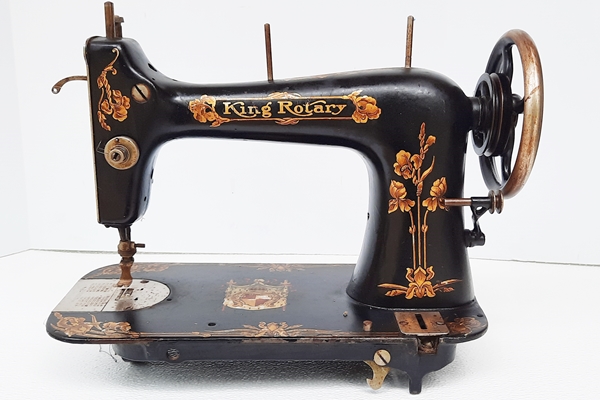
New Willard
The New Willard was made from 1915 into the 1930s (by White after 1924). It appears to be
identical to
the Minnesota A.
Design features include:
- rectangular base
- vibrating shuttle
- disk tension located on the front of the machine
- vertical stitch length lever located on front of pillar
- access plate at top of pillar on the back of the machine
- side clamping feet
- SN located on bed tag in front or back of pillar, in groove under slide plate or on rim of vertical stitch length lever
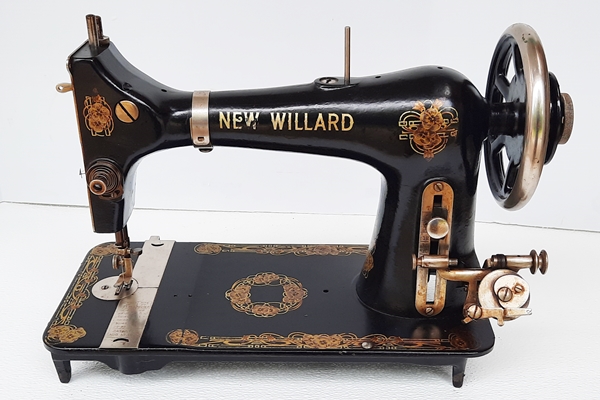
Lessing
The Lessing was made beginning in 1920 and sold into the late 1920s (the last ad I found was in 1927, so
it seems likely that White just sold the remaining stock and never made this model).
It appears to be
identical
to the Minnesota H.
Design features include:
- rectangular base
- vibrating shuttle
- disk tension located on the front of the machine
- vertical stitch length lever located on front of pillar
- access plate at top of pillar on the back of the machine
- side clamping feet
- SN located on bed tag in front or back of pillar, in groove under slide plate or on rim of vertical stitch length lever
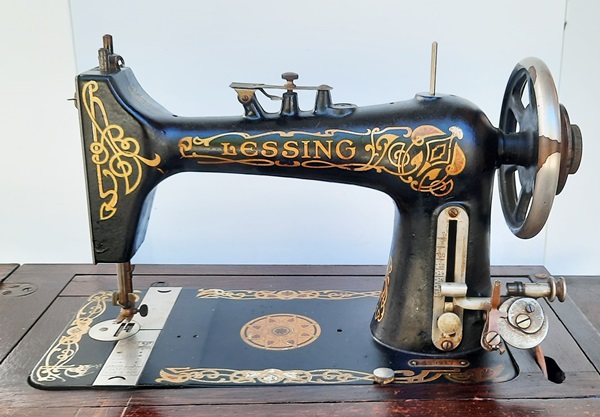
Badged Domestic models found in advertisements in 1901
The Conquest appears to be a badged Domestic C with a different leaf tension. There are no images
of the Fireside or Treasure machines, but they are likely to look like a Domestic C or New Domestic.
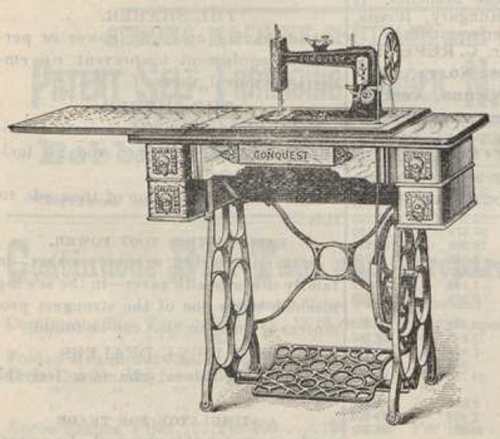 Conquest
Conquest
The following Conquest photos are courtesy of Elisa Kravchuk Jackson
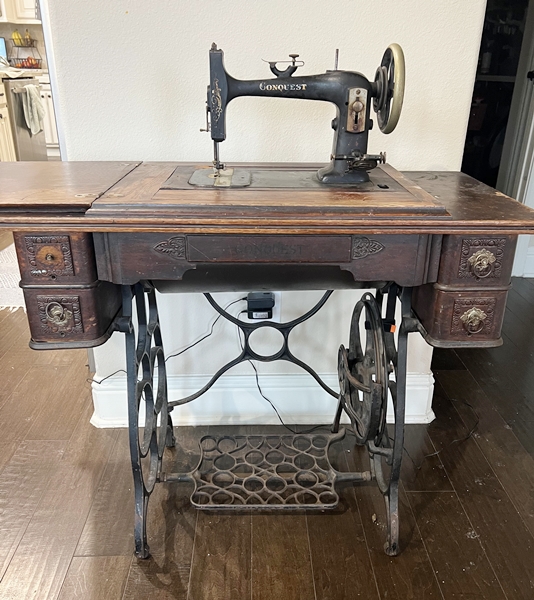
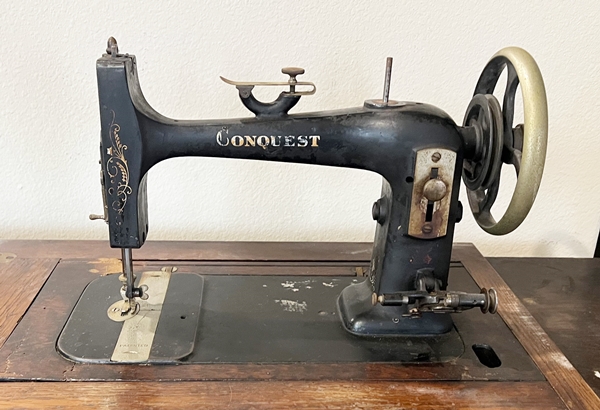
If you have photos of the Fireside or Treasure that you are willing to share, please email me
with "Domestic Info"
in the subject line.
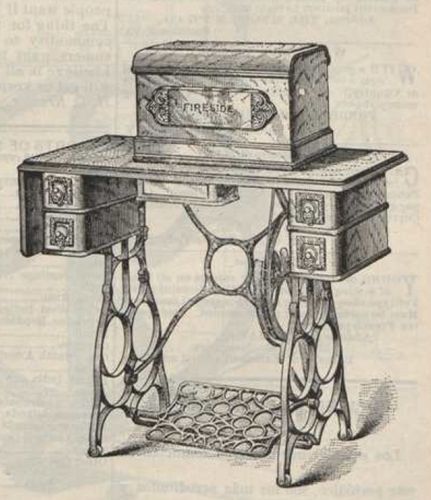 Fireside
Fireside
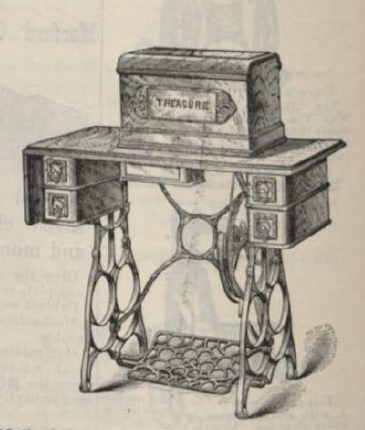 Treasure
Treasure
 (Early - convex left end of arm, early leaf tension)
(Early - convex left end of arm, early leaf tension)
 (Early - convex left end of arm, early leaf tension)
(Early - convex left end of arm, early leaf tension)

 (Late - concave left end of arm, late leaf tenson)
(Late - concave left end of arm, late leaf tenson)








 early
early late, note change in stitch length control
late, note change in stitch length control

 photo courtesy of Jo Mercer (pre-1920)
photo courtesy of Jo Mercer (pre-1920)
 (1920+)
(1920+)








